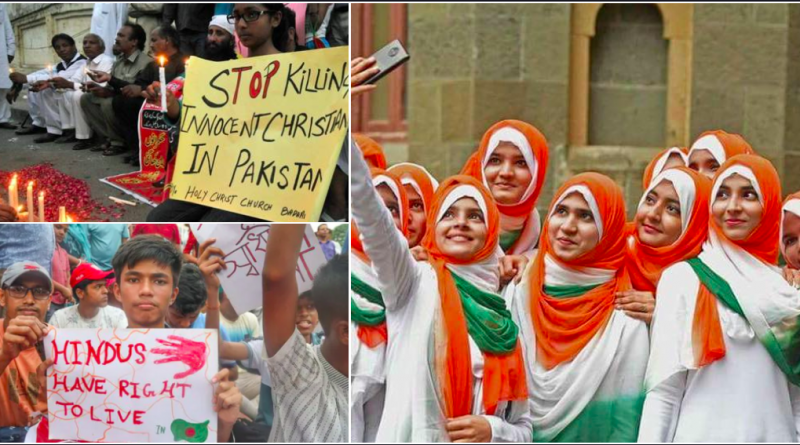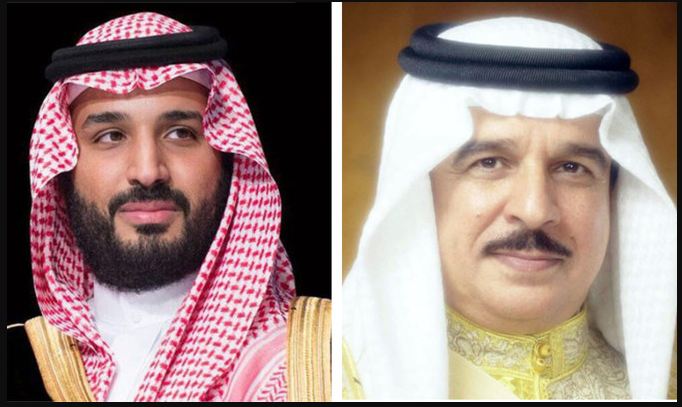Muslims Thrive in India, Hindus Disappear in Pakistan and Bangladesh: Why?
The world must ask: why are minorities disappearing from Pakistan and Bangladesh, while thriving in India?
The fabric of South Asia has been woven with the threads of diverse cultures and religions for centuries. Yet, over the past seven decades, a disturbing pattern has emerged—one that tells the heartbreaking story of declining Hindu populations in Bangladesh and Pakistan, while India’s Muslim population has flourished. These numbers are not just cold statistics, they reflect the lived experiences of millions, of communities uprooted, of dreams shattered, and of survival against all odds.
Bangladesh: A Rapidly Shrinking Hindu Population
Imagine a land where your ancestors lived for generations, where temples echoed with prayers, where festivals were celebrated with grandeur—only to see it all vanish within a lifetime. This is the tragic reality for Hindus in Bangladesh.
In the early 20th century, Hindus comprised a significant portion of Eastern Bengal’s population—about 33% in 1901. But their numbers started declining drastically after India’s partition in 1947. The mass violence and forced migrations following the creation of East Pakistan (now Bangladesh) saw the Hindu population dwindle to 22% by 1951. When Bangladesh gained independence in 1971, Hindus made up just 13.5% of the population. The latest census of 2022 reports that Hindus now constitute a mere 7.95%—a staggering decline.
What led to this drastic decrease? It wasn’t just natural migration or lower birth rates. The 1971 Bangladesh Liberation War saw the systematic targeting of Hindus, with an estimated 2.4 million killed, according to independent reports. The community never truly recovered from this trauma. Even today, violence, land grabs, and discrimination continue to push Hindus out of their homeland.
The situation worsened in August 2024, when Bangladesh plunged into political chaos following Prime Minister Sheikh Hasina’s resignation. Hindu homes, businesses, and temples became easy targets for rioters. The violence led to at least three deaths, while thousands of Hindus were forced to flee their homes.
Despite sporadic efforts by the government to curb anti-Hindu violence, the exodus continues. Many Bangladeshi Hindus look towards India as their last refuge, while those who stay behind live in fear, their voices drowned in the silence of indifference.
Pakistan: The Vanishing Hindus of Jinnah’s Dream
When Pakistan was formed in 1947, Muhammad Ali Jinnah had envisioned a state where all religious communities could coexist. However, history took a different turn. Hindus made up nearly 14.6% of Pakistan’s population at the time of partition. The violent upheaval that followed saw a mass exodus of Hindus to India, and by 1951, their numbers had plummeted to roughly 2.5% today.
Forced conversions, kidnappings, and systemic discrimination have forced many Hindus to flee or hide their identity. A report by the Human Rights Commission of Pakistan estimated that around 1,000 Hindu girls are abducted and forcibly converted to Islam every year. These cases rarely see justice, as families are often too fearful to fight against powerful perpetrators.
The condition of Pakistan’s Hindus can be best understood through the story of Sohana Kumari, a 14-year-old girl from Sindh, who was abducted in broad daylight in 2023. Despite her family’s desperate attempts, the courts ruled in favor of her “conversion,” claiming she had converted willingly. “She was my little girl, she loved to play with dolls. How could she have chosen this life?” wept her mother, standing outside a Karachi courthouse.
A year earlier, in 2022, Pooja Kumari, an 18-year-old Hindu girl, was brutally murdered in Sukkur, Sindh, after resisting an abduction attempt. Her killers, emboldened by a culture of impunity, attempted to force her into marriage and conversion, but she fought back, only to be shot in broad daylight. Her tragic death sparked outrage within Pakistan’s Hindu community, yet little action was taken against the perpetrators.
Similarly, Priya Kumari, another young Hindu girl, was abducted and forcibly converted in 2022, with her family left helpless as the authorities failed to intervene. Despite repeated appeals, her case, like many others, was ignored, reflecting the deep-rooted discrimination and lack of legal protection for minority groups in Pakistan.
According to reports from the United Nations and human rights groups, hundreds of Hindu and Christian girls are abducted each year in Pakistan, many of them minors. The Human Rights Commission of Pakistan (HRCP) has called on the government to take stricter measures against forced conversions, yet the problem persists due to the lack of political will and the influence of extremist elements.
Unlike India, where minorities have representation in politics and judiciary, Pakistani Hindus remain largely invisible in governance, their voices muffled under the weight of institutional neglect.
India: A Beacon of Pluralism
India’s Muslim population has experienced notable growth in stark contrast to many of its neighbors. At the time of independence in 1947, Muslims accounted for roughly 9.8% of the country’s total population. Fast forward to 2025, and they now represent about 17%, reflecting both a demographic shift and the nation’s broader societal dynamics.
This growth underscores the pluralistic foundation of India, where constitutional protections, such as the right to religious freedom, are enshrined. While communal tensions do surface from time to time, India has managed to offer an environment in which Muslims thrive across various sectors—business, politics, education, and entertainment.
Indeed, India has seen Muslim figures rise to the highest echelons of leadership: from serving as presidents to commanding Bollywood fame, from becoming influential business tycoons to holding pivotal roles in the judiciary, such as Supreme Court judges. These milestones are significant not only within India but also set India apart from its neighbors like Pakistan and Bangladesh, where religious minorities, particularly Hindus, have faced challenges.
India has now been recognized as the most inclusive nation for religious minorities. The report, based on a survey of 110 countries, ranks India first for its acceptance of religious minorities, ahead of South Korea, Japan, and the United States. In contrast, the UK and UAE rank much lower, at 54th and 61st. The report attributes India’s high ranking to its constitutional provisions for the advancement of linguistic and religious minorities, particularly in culture and education, and highlights the country’s commitment to fostering diversity without imposing restrictions on any religious sect.
Further, India stands as the only country in the region where a religious minority, particularly its Muslim community, has seen sustained demographic growth and flourishing despite periods of tension, and without systemic persecution or marginalization. This is a unique aspect that speaks to India’s complex yet enduring pluralism, a distinctive feature that differentiates it from its neighbors.
The Stark Reality: A Call for Reflection
The demographic trends in South Asia tell a disturbing story. India, a Hindu-majority nation, has nurtured its minorities, while Bangladesh and Pakistan have systematically erased theirs. The data speaks volumes:
- Bangladesh: Hindus constituted 31% in 1971, now reduced to 8% in 2025.
- Pakistan: Hindus made up 15% in 1947, now barely 2.5%.
- India: Muslims were 9% in 1947 and have grown to 17% in 2025.
These are not just numbers; they are the stories of millions who have either been forced to flee, convert, or live in fear.
The world must ask: why are minorities disappearing from Pakistan and Bangladesh, while thriving in India? Why do Hindus have no safe haven in countries where their roots go back millennia? Why does the global human rights community stay silent?
The answer lies in the uncomfortable truth—while India, with all its complexities, has upheld the principles of religious coexistence, its neighbors have failed to protect their minorities.
It is crucial for South Asia to introspect. A region that once thrived on its diversity is now witnessing the erasure of entire communities. If real peace and harmony are to be achieved, it is time for Bangladesh and Pakistan to acknowledge their past mistakes and take genuine steps toward protecting their dwindling minorities. The world is watching. And history will judge.



